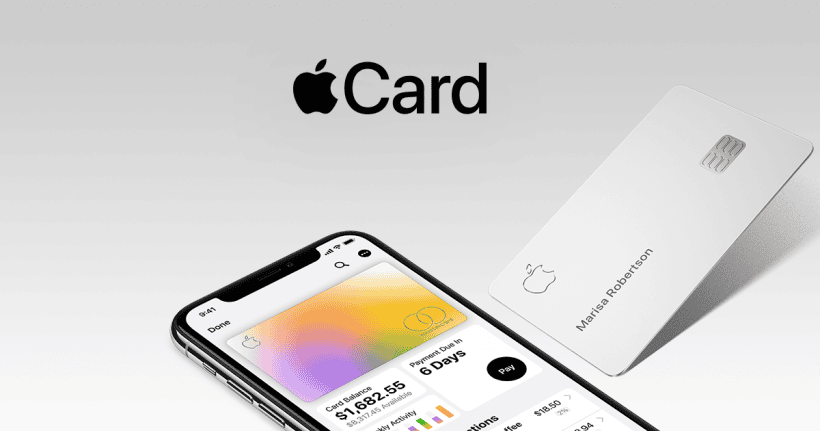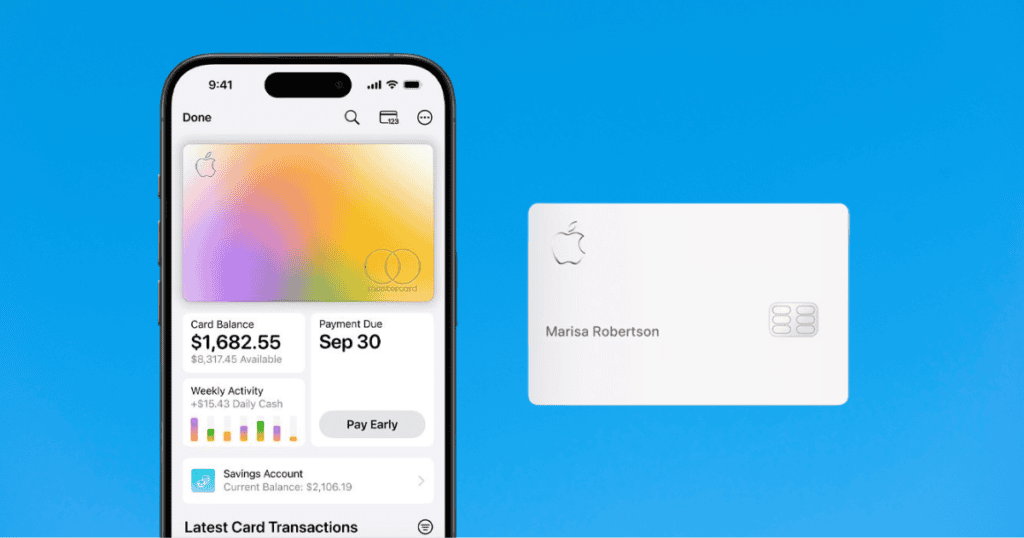As the Apple Card marks its fifth anniversary, its continued exclusivity to the U.S. market raises pertinent questions about the brand’s strategic direction. This credit card has made significant strides in user adoption, particularly among those integrated into the Apple ecosystem, offering appealing features such as daily cash rewards and fee waivers. However, the absence of a global rollout prompts a closer examination of the potential barriers and opportunities for expansion. What implications does this limited availability have for its future growth and competitive positioning in the financial services landscape?
Apple Card Overview
Celebrating its fifth anniversary, the Apple Card has established itself as a significant player in the financial landscape since its launch on August 20, 2019. As Apple’s first foray into the credit card market, it remains exclusive to the U.S. and has garnered attention for its innovative features and user-friendly design.
The Apple Card offers a straightforward cashback rewards system, providing 1% on all purchases, 2% on those made via Apple Pay, and 3% on transactions at Apple Stores.
Issued by Goldman Sachs, the Apple Card emphasizes transparency and accessibility, with no annual fees, foreign transaction fees, late payment fees, or exceeding credit limit fees. This cost-effective approach appeals to a broad range of consumers looking for a reliable credit card solution.
The deep integration with the Wallet app allows users to monitor spending in real-time, making financial management easier than ever. As the Apple Card continues to evolve, its focus on user empowerment and responsible credit use positions it as a noteworthy option in the competitive credit card market.
Key Features and Benefits
The Apple Card stands out in the credit card market due to its combination of user-friendly features and significant benefits tailored to enhance the financial experience. With no annual fees, foreign transaction fees, late payment fees, or exceeding credit limit fees, the Apple Card presents a cost-effective solution for consumers.
One of its most appealing features is the Daily Cash back program, which rewards users with 1% on all purchases, 2% on Apple Pay transactions, and 3% on purchases made at Apple Stores. This cash back is credited daily, allowing users to enjoy their rewards immediately.
Moreover, Daily Cash can be deposited into Apple Cash or Savings accounts, providing flexibility in managing rewards without any limits on accumulation.
The Apple Card also integrates seamlessly with the Apple Wallet app, offering real-time spending tracking and management tools that empower users to monitor their finances effectively.
Advanced security features, including unique transaction codes and the absence of visible card numbers, prioritize user privacy and protection during transactions.
Collectively, these features establish the Apple Card as a leading choice for those seeking a modern and efficient credit card experience.
Growth in User Adoption
How has the Apple Card managed to capture the attention of millions of users since its launch in August 2019? The card has experienced remarkable growth in user adoption, particularly among iPhone users, reflecting Apple’s strategic integration of financial services within its ecosystem.
Key factors contributing to this growth include:
- Seamless Integration: The Apple Card effortlessly connects with Apple Pay and the Wallet app, enhancing the user experience.
- Daily Cash Rewards: Users are incentivized with cash back on purchases, providing immediate financial benefits.
- User-Friendly Application: The application process is straightforward and does not initially impact credit scores, attracting users who may be hesitant about traditional credit cards.
- No Annual Fees: The absence of annual fees makes the card appealing for users looking to save money while managing their finances.
Despite being limited to the U.S. market, the Apple Card’s features resonate with consumers seeking innovative financial solutions.
The anticipated decoupling from Goldman Sachs in 2025 may influence future growth, but the existing user base showcases a strong foundation for potential expansion in the evolving landscape of digital finance.
Impact on Financial Management
Apple Card’s growth in user adoption has significantly influenced financial management practices among its users. With no fees—annual, late, or foreign transaction—Apple Card simplifies financial management by removing unexpected costs. This transparency fosters responsible spending, particularly through the Daily Cash rewards structure, which offers cashback ranging from 1% to 3% on purchases. This immediate financial benefit encourages users to make more informed spending decisions.
The integration of the Apple Card with the Wallet app enhances users’ ability to track expenses in real-time, thereby promoting better budgeting habits and increased financial awareness.
However, it is important to note that the lack of traditional consumer protections found in other credit cards may expose users to potential financial risks, especially those unfamiliar with credit mechanics.
As Apple plans to transition away from Goldman Sachs by 2025, users may experience shifts in customer service and support. These changes could impact the overall financial management experience, necessitating users to adapt their strategies accordingly.
Co-Ownership and Family Features
Co-Ownership and family features of the Apple Card provide an innovative approach to financial management that fosters collaboration among family members. The AppleCardFamily feature allows families to share credit lines, enabling each member to build their credit history from the age of 18. This collaborative environment not only promotes responsible spending but also enhances financial learning for younger participants.
Here are some key benefits of the AppleCardFamily:
- Shared Responsibilities: Co-Owners equally share benefits and liabilities, ensuring both parties are engaged in managing the account.
- Spending Limits: Participants aged 13 and older can spend within limits set by Co-Owners, allowing for financial independence while under supervision.
- Daily Cash Rewards: Both Co-Owners and Participants earn Daily Cash on purchases, which can be directed to individual Savings accounts, promoting savings habits.
- Credit Score Impact: All Co-Owners are liable for account balances, meaning payment history affects the credit scores of both parties, emphasizing the importance of timely payments.
Through these features, the Apple Card promotes a family-centric approach to financial management, encouraging responsible practices among all users.
Future Developments Ahead
As the Apple Card celebrates its fifth anniversary, attention turns to its future developments, particularly in light of the anticipated decoupling from Goldman Sachs in 2025. This pivotal moment may pave the way for new partnerships, potentially enhancing the card’s features and expanding its reach within the rapidly evolving digital payments landscape.
Apple is expected to prioritize future growth by integrating innovative solutions that align with its overarching financial strategy. Enhanced customer experience will likely be a focal point, especially as Apple addresses past service challenges associated with Goldman Sachs.
New features, such as family sharing options, could further engage users by promoting financial literacy among younger generations, allowing families to manage finances collaboratively.
Moreover, the integration of enhanced savings tools may cater to the increasing consumer demand for more robust financial management capabilities.
As regulatory challenges and market trends continue to influence the financial ecosystem, Apple’s adaptability will be crucial in maintaining its competitive edge.
Exclusivity to the U.S. Market
Since its launch in August 2019, the Apple Card has maintained a singular focus on the U.S. market, making it a unique offering among digital financial products. This exclusivity has contributed to its distinctive positioning, yet it raises questions regarding potential international expansion.
Key points regarding the Apple Card’s U.S. exclusivity include:
- Strategic Focus: The card has been designed to meet the needs of American consumers, enhancing user financial management.
- Partnership with Goldman Sachs: This collaboration has driven the card’s features, but it will decouple in 2025, potentially impacting services.
- Limited International Availability: Despite initial announcements about expansion plans, there have been no confirmed deals in regions like Europe, Hong Kong, or Canada.
- User Growth: The Apple Card continues to show significant user growth within the U.S., despite high consumer interest from international markets.
The ongoing exclusivity of the Apple Card not only limits access to its features for users abroad but also poses questions about its future in the competitive landscape of digital finance, especially as it approaches pivotal changes in its banking partnership.
Final Thoughts
In conclusion, the Apple Card’s fifth anniversary highlights its continued success within the U.S. market, with over 6 million cards issued as of late 2023. This statistic underscores the card’s popularity and the growing trend of digital payment solutions. The unique features, such as daily cash rewards and fee-free structure, have significantly influenced consumer financial management. However, the absence of international availability raises questions regarding potential global expansion and opportunities for Apple to enhance its financial services portfolio.



